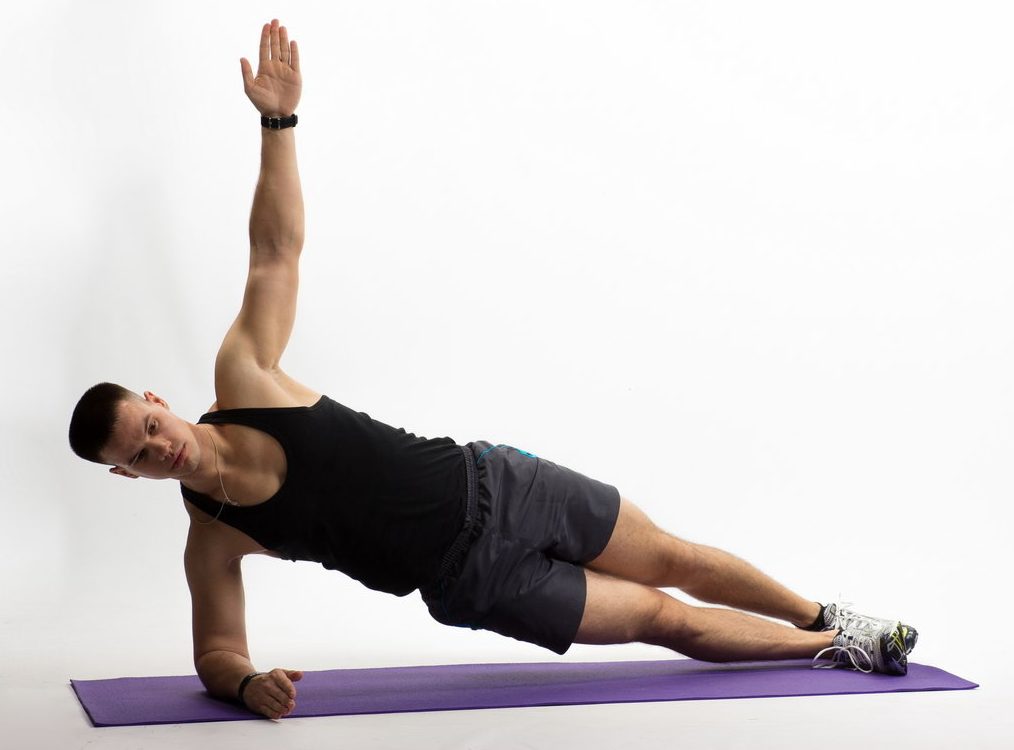
5 strategies to increase muscle size
This article is for those who want to increase the volume and improve the shape of their muscles. Surely, you wondered why some guys have such powerful and voluminous muscles, as if pumped up, while we ordinary mortals seem to be flat and not so voluminous.
You may not be able to keep up with for those with a genetic predisposition to muscle development, for such famous stars as the 4-time winner of the “Arnold Classic” competition Flex Wheeler, Mr. Olympia Phil Heath, but you can significantly increase the volume of your muscles using the techniques suggested here. p>
№ 1. Increasing the duration of the load on the muscles
The duration of the load implies the amount of time during which the muscles are in a tense state during the approach.
Is the effort is isometric, eccentric or concentric, the contraction of the muscle leads to its tension. But tension is not important for muscle growth. We are interested in the effect of prolonged tension caused by the clamping of blood vessels.
When a muscle contracts, blood vessels are compressed until they are completely blocked, thereby limiting blood flow to that muscle. This tension effect is obtained by stepping on a garden hose.
The longer the muscles are under stress, the longer the blood flow to it is limited. But the heart still pumps blood, and due to the compression of the vessels around the working muscle, blood accumulates in the tissues. After completing the approach, the muscles relax, and the blood flow tends to the muscle.
The longer the vessels are clamped, the more blood rushes into the muscle. To get a feel for this process, you can try doing push-ups for 5 seconds and pay attention to how the muscles are filling. Then you should rest for two minutes, and then do push-ups for 30 seconds, and again feel the blood rush to the muscles.
This process is called hyperemic supercompensation and is known to bodybuilders as “pump”. The rapid flow of blood in the muscles increases the pressure.
In Pumping Iron, Arnold noted that a good flow of blood to the muscles is just an incredible sensation. But more important to you should be that the blood flow puts pressure on the dense, hard shell of the muscle – the fascia.
The fascia is very difficult to stretch, but over time, and it begins give in to the pressure that comes from the inside and stretch, allowing the muscle that surrounds it to actually and visually increase in volume.
Although this information is scientific, we are interested in results, not science. In the experience of most bodybuilding trainers, the increased duration of the load on the muscles increases their volume. Although, of course, this does not happen in a short time.
According to the experience of Western coaches, high speed of movement in repetitions and the use of more weight allows you to involve more muscle fibers in the work.
That is why, instead of using less weight and deliberately slowing down the movements, it is better to make movements, even concentric, quickly, but choose a weight with which you can do 45 seconds sets.
With a duration of less than 30 seconds, this will not cause enough flow blood to create good intramuscular pressure. On the other hand, to complete a set longer than 60 seconds, you need very little weight, which is also not good. Therefore, the optimal time is 45 seconds.
№2. Doing more work
Your body has incredible adaptability. It does its best to adapt to any stress and become more prepared for certain tasks. This also applies to high volume training.
Training volume refers to the total number of reps and sets. This is the total amount of work that muscles do during exercise. More work requires more energy. The energy for muscle contraction is provided by muscle glycogen, a store of carbohydrates stored in muscle tissue.
Let’s assume that you would like to use the above principle of stretching the fascia. You do sets of twelve repetitions in the chest exercise. The pectoral muscles will use significantly more glycogen for ten sets of twelve reps than for two sets of twelve reps. It should be remembered that only the glycogen of the working muscles is consumed.
With a sufficient increase in the volume of training, thus, the depletion of glycogen reserves in the muscles occurs, an interesting phenomenon occurs. The body begins to strive to replenish glycogen stores in order to successfully cope with such loads the next time.
The process of a short-term increase in muscle glycogen content is called glycogen supercompensation. In this case, the muscles are temporarily able to store a larger volume of glycogen than usual, say, instead of 100%, it stores 120%.
With regular repetition of the stimulus, i.e. with a systematic depletion of glycogen stores, the body gradually acquires the ability to accumulate an increasing amount of this substance. This means that this pattern can also be used in the long term.
And, despite the fact that we are not so worried about the volume of glycogen in the muscle, how much its volume, the muscle containing more glycogen looks more voluminous and rounded.
You will not be able to see changes after 1-2 high volume workouts, but the results will become noticeable over time. After 8 weeks of high volume training, you may find that your muscles are getting bulkier. But there are exceptions to this rule. With a relatively high volume of your training, you will not even notice serious changes, because your body is adapted to such loads. The same applies to the duration of the load on the muscles.
The second reason for the weak effect of this technique may lie not in exercise, but in nutrition. If you do not consume enough carbohydrates, especially after exercise, when the body’s ability to store glycogen increases, your body will not have the material to fill muscle glycogen.
Remember that glycogen is simply a store of carbohydrates, not fats or proteins … Just like filling a gas tank with gasoline, you need to “fill” your body with enough carbohydrates to replenish glycogen stores.
It should be noted that as the muscles constantly accumulate more glycogen, this also puts pressure on the fascia surrounding them , and gradually stretch it.
It must be remembered that the intensity and volume of work should be inversely proportional to each other, this is required for the complete recovery of not only the muscles, but also the nervous system. That is why you should not give in to the temptation to bring every approach of a high-volume program to failure.

№3. Optimizing the length of the breaks between sets
Like the first strategy, optimizing the rest time between sets can increase blood flow as well as increase muscle pressure.
Let’s pretend you’re doing a killer approach. The muscles swell as if the skin is about to burst. Then you want to rest for three minutes, giving the body time to replenish creatine phosphate stores in tired muscles, remove lactic acid and hydrogen ions. In the next approach, in order to achieve good performance, this is very useful.
But in order to maintain high intramuscular pressure, 3 minutes of rest is a lot, since a significant part of the blood that creates this pressure, during this time muscles.
Do not forget that the fascia consists of strong, tough tissue. It does not stretch at low pressure in a short period of time. For it to stretch, you need the muscle to exert more continuous pressure on it.
That is why in order for the fascia to stretch as much as possible and increase the muscle volume, you need to keep the muscle filled with blood as long as possible.
This technique has its advantages and disadvantages. If you start the next approach too early, you will not be able to complete it at full strength. As previously mentioned, it takes a certain amount of time to remove the products of its work from the muscles and restore the supply of creatine phosphate. This is required to do a decent amount of reps per set.
On the other hand, very long rest can relieve the pressure that is put on the fascia.
In this case, you need to listen carefully to your body. You should pay attention to how swollen and dense the muscles become from the blood flow after the approach, and try to catch the moment when this effect disappears. Thus, you can rest as much time as necessary for optimal stretching of the fascia.
It is imperative to note in the training diary the number of repetitions performed in the approaches. If you performed fifteen repetitions in the first approach, and only six in the next, then this means that you have not rested enough.
By observing the sensations in the muscles and comparing the number of repetitions in further approaches, you can choose the optimal length of rest between approaches.
But if you do not want to sometimes bother your own brain, focusing on the sensations, then you should rest for 45 seconds. 30-60 seconds is the optimal time to recover between sets. Doing less strenuous exercises, such as barbell curls, will take 30 seconds to recover. When doing more strenuous exercises such as squats, it is best to rest for 60 seconds between sets. Naturally, if you have enough strength to do squats with a minute of rest between sets.
№ 4. Stretching a muscle while it is full of blood
Doing stretching exercises is very useful, and at any time. Stretching is one of the most overlooked techniques for improving muscle performance, appearance, and injury prevention.
Stretching can be used to ease the grip of fascia muscles or keep muscles stretched for as long as possible. promote stretching of the fascia.
To increase the tensile pressure on the muscular membrane, stretch when the muscles are still filled with blood. In other words, it is necessary to do muscle stretching exercises no more than thirty seconds after the end of the long approach. And it is necessary to keep the muscles in a state of stretching longer than usual. You can stretch for sixty seconds or longer.
But, since static stretching exercises may reduce muscle performance in further approaches, you need to stretch after the last approach of exercises for a specific muscle group.
Stretching the muscles turns out to be another, no less significant effect … If you hold the position of a fairly strong stretch for a long time, this allows you to stimulate the growth of new sarcomeres and lengthen the muscles.
If you can lengthen the muscle due to the growth of sarcomeres, then it will become visually voluminous, especially in a stressed state.
This method, like any technique associated with stretching the fascia, takes time and consistency to use. You should write down in your training diary that you need to stretch after training, otherwise you can forget about it. And you should tune in to the fact that you will begin to notice changes in a maximum of three months. With enough patience to follow this strategy for six months, you will definitely see the result.
№ 5. Isolating lagging muscles
This strategy helps to increase muscle volume not by stretching their shell, but by focusing the load on the target muscle group.
The whole point of training is to subject the muscles to unusual loads, and then allow them to adapt. To develop weak muscles, you need to make sure that these muscles are doing the main work. This is the only way to force these muscles to adapt and develop.
For example, if, for some reason, the main work is done by triceps when performing a bench press to develop the pectoral muscles, then they will become stronger and larger.
In such cases, there are several methods to make sure that not the triceps, but the pectoral muscles do the main work and take the stimulus for growth. One technique is to pre-fatigue the pectoral muscles with isolation exercises before doing the bench press.
For example, you can do a dumbbell lift while lying down, and then move on to the barbell press. You may not like the fact that you have to work with a light weight during the bench press. But you can be sure that the tired pectoral muscles will do most of the work. And it is they who will have to adapt to the stress with the help of hypertrophy.
In addition to pre-fatigue, performing isolation exercises is very useful for increasing lagging muscles.
It is preferable for general development to do basic exercises, such as deadlift deadlifts, squats and the aforementioned bench press. However, when it comes to the development of individual muscles, then isolation exercises, such as straight-arm row of the upper block, leg extension in the simulator and arm extension with dumbbells, are often more effective.
Isolation exercises are not suitable for general strength development. very good, however, they allow you to work out lagging muscle groups, due to the fact that in such exercises all the load goes to the target muscle. If you compare, for example, leg extension with squats or arm extension with a press.
If you do not feel well the work of individual muscles while performing a basic exercise, then you can first try to do isolating exercises for the same muscles, and then go to basic. Thanks to this sequence, you can pre-fatigue the muscles, as well as activate the nerve fibers in it.
For example, if you cannot feel the work of the muscles of the upper back (the middle part of the rhomboid muscles and trapezium), performing a barbell pull to the belt in tilt, then you can first try to raise your arms with dumbbells through the sides in the tilt, and then move on to the deadlift. You may find that you will feel better for your upper back muscles working towards the waist.

